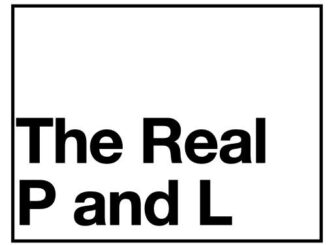I recently learned of a pretty interesting financial literacy study that came out of the Global Financial Literacy Excellence Center at George Washington University. The study is “Fearless Woman: Financial Literacy and Stock Market Participation” and looked at the difference between financial literacy rates between males and females. The end result is that females are slightly less financially literate than males, but there was a very interesting finding in their study.
There is no doubt that women face an uphill battle in terms of financial literacy, but there is no reason why we can’t all try to level the playing field. Across the globe, women have less access to a formal financial institution. Worldwide, only 47% of women have access to a formal financial institution vs 55% for men. Having this number be so low is a problem itself, but with the emergence of technology, it’s getting easier and easier for people to access financial resources. Having financial literacy does matter, “Almenberg and Dreber (2015) show that differences in financial literacy can explain some of the gender gap in stock market participation.” Participating in the stock market is one of the easiest ways to create long-term wealth for yourself and your children. If people don’t have the proper financial literacy, and women have slightly less of it, then the less likely you are to participate in the stock market losing out on life-altering money. Investing $100 a month, for 50 years, with a 9% return means that you’ll have slightly over $1M in 50 years’ time.
The goal of this paper was to “consider whether and the extent to which confidence
contributes to the persistent gender gap in financial literacy and financial behavior.” The data was collected by asking three multiple choice financial literacy questions to a group of adults. The first time they saw the questions in May, there was an option to answer “Do not know” and then the participants were given the same questions 6 weeks later in July, but this time the “Do not know” option was not available for selection. Participants were also asked to rank their confidence on their answer on a scale from 1 (not confident at all) to 7 (completely confident) You can see the questions asked below:
The interesting part of this was the inclusion and exclusion of the “Do not know” option. The research forced the participants to give an answer and they couldn’t back away from it. For all three questions, women chose the “Do not know” answer at a higher rate than men. In fact, it was almost at double the rate of men for all 3 questions. Since more women chose the “Do not know” answer, they had fewer correct answers than men in the first round of questions.
When these participants were surveyed again 6 weeks later with the same questions, but with the “Do not know” option removed, women scored much closer to men. There was still a slight gap between men and women, but this gap shrunk when everyone was forced to choose an option. For both men and women, scores improved when they were forced to pick an answer. The argument can be made that these people knew the correct answer, but they were unsure of themselves to pick it.
This study reminded me of a Talks at Google by Claire Shipman called The Confidence Code for Girls. I would highly recommend giving it because there are some pretty eye-opening concepts and stats which come out of it. The 10,000-foot view of the talk is that girls aren’t socialized to take risks at a young age like their male counterparts. From an early age, boys are more likely to experience failure from the risks they take. They learn that failures don’t completely end their lives and they’ll continue to take risks later on in life. Being able to take risks and bet on yourself is a part of the puzzle on how to become successful. It’s not the whole thing, but it does account for some part of the equation.
The flip side of the lack of risk-taking and following what is told of them means that girls consistently outperform boys in school. They know what is asked of them to get an A and they do exactly that to get the A. One of the craziest stats that stuck with me from the talk was males will apply to jobs if they meet 60% of the qualifications in the job descriptions, while females won’t apply unless they feel like they hit 100% of the qualifications. I think this stuck with me because I’ve applied to so many jobs that I was underqualified for, but I still hit the submit button because there is no loss if I didn’t get called for the interview. Taking some measured risks is a good thing.
Investing in the stock market is a calculated risk. You can almost guarantee a return if you invest in the broad market and you hold for 10+ years. From 1926 to 2020, there has never been a 20 year period where the S&P didn’t return a positive value. You can pick any date from 1926 to 2000, look 20 years into the future, and the value of the S&P 500 will be higher 20 years into the future. Pretty remarkable if you ask me. I really want to share this knowledge with everyone!
Peace and Love.
